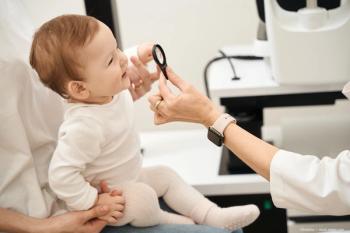
Extended marketing mix drives service delivery
Physical evidence is a linchpin the patient may use to attach tangibility to a service's intangible nature.
Services differ from goods in many regards. Several distinguishing features of services were presented in my last Basic Science of Business article ("Knowing services aspect key to marketing direction," August 15, 2005, and at
Booms and Bitner (1981) presented a useful supplement to the traditional marketing mix. In their "extended marketing mix," the added components of participants, process of service assembly, and physical evidence were suggested.
A look at each of the new components is in order.
Participants
Participants include doctors, clinical staff, and all other employees including managers. In many cases, contact employees are as important as (or more important than) the physician in a patient's assessment of the experience. Extensive research has been done on appropriate techniques of employee selection, training, retention, productivity, rewards, and satisfaction.
Medical services (like other services) involve participation of the customer in the service encounter, and therefore patients are key participants. The other patients in the environment are also participants. The number, demographics, appearance, and behavior of other patients can have a dramatic impact on the service experience appreciated by an individual receiving care.
Process of service assembly
Process of service assembly is the series of events that dynamically combine to deliver a service to the consumer. This is very apparent in experiences such as a restaurant meal. As described above, patients play a key role in the process of assembly for medical services.
One of the best tools available to assess process of service assembly is the "service blueprint." A service blueprint schematically demonstrates the steps and the interactions that culminate in delivery of the medical service. It can be successfully applied in the analysis of office visits, diagnostic (testing) services, and office surgery.
Service blueprints generally break down into four levels. The bottom rung is made up of support processes. In a medical practice, this includes employee payroll, insurance, and medical records functions.
The next rung involves "backstage" contact employee actions. An example here would be after-hours preparation of the exam room in anticipation of the first visit the following day.
The next level comprises "onstage" contact employee actions. These are actions that the patient can see. They would include the activities occurring at the front desk (such as phone calls made to obtain insurance authorization) that can be directly observed by the patient.
Finally, there are customer actions. These are the patient care activities occurring between the patient and the ancillary caregiver and between the patient and the physician.
Successful review of a service blueprint involves assessment of the time required for each step, a search for unnecessary and/or redundant steps, and estimation of the quality of service obtainable through a given blueprint.
Newsletter
Don’t miss out—get Ophthalmology Times updates on the latest clinical advancements and expert interviews, straight to your inbox.













































